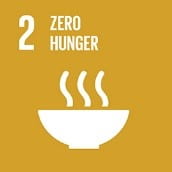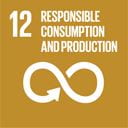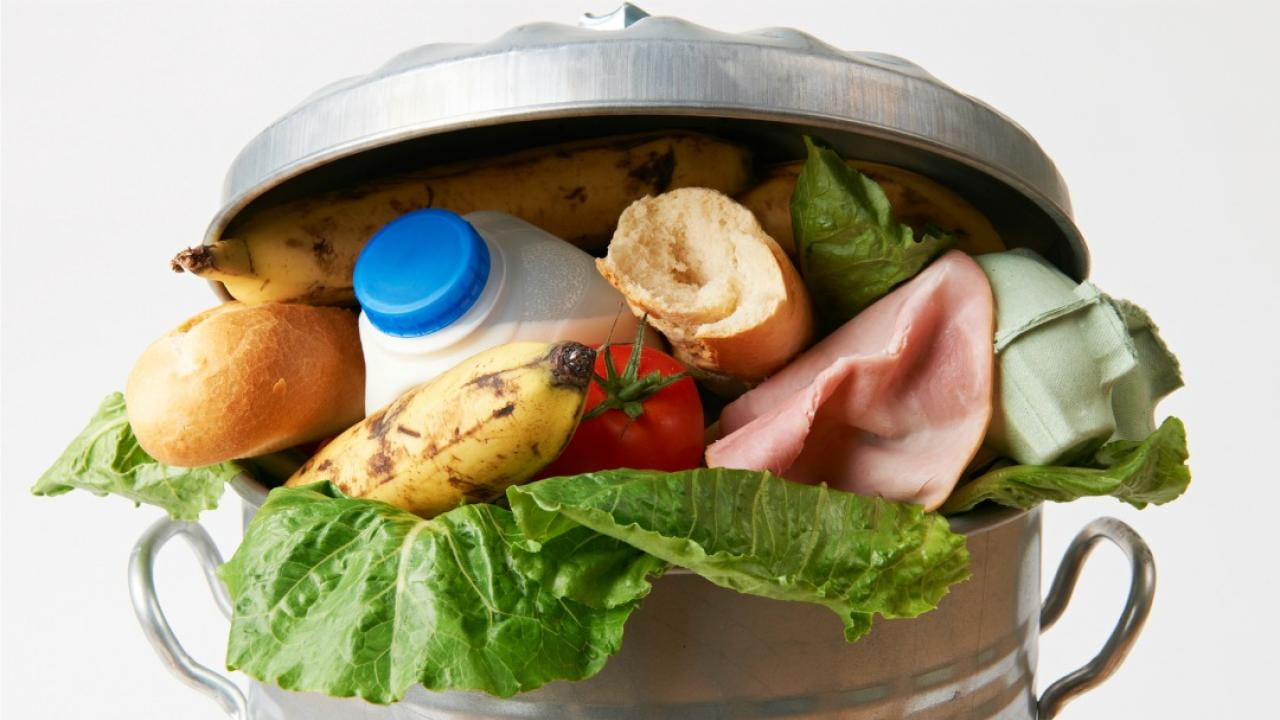Dennis Laurentius, Marinka Ooteman, Catherine Coravos, Rafael Breviglieri, Cyrus Suntook
Food is an important aspect of our lives – we eat for survival, we eat as a social activity, and food is an important part of religions and traditions, for example fasting during Ramadan and turkey during Thanksgiving in the US. Even though we enjoy food everyday, it is of sheer importance that we close the circle on food consumption. Roughly one third of the food produced in the world for human consumption every year gets lost or wasted, representing approximately 1.3 billion tons of food. Highest levels of food loss and waste per capita can be found in Europe and North America in 2015. This calls for action as food will also be a scarce resource, in 2050 the demand for food is expected to grow as the world population will grow to 9 billion people that have on average twice as much income to spend compared to now. To meet increased demand, production will need to grow 60% whilst natural resources are currently already are approaching planetary boundaries. These facts show the urgency of reducing food waste and the fact that we need to act now.

When we consider food consumption, we can distinguish two sorts of meals that we take: meals cooked by ourselves or friends and family, or meals that are cooked professionally by restaurants, or other gastronomic professionals.
Professionally cooked meals encounter several inefficiencies – they need to estimate quantities needed and be prepared on the number of customers, bearing the information risk similar to the newsvendor problem. A restaurant has underage as well as overage costs when sourcing for its business operations. Since no restaurant can perfectly estimate demand, there will be food waste as some ingredients will not be used (cooked or uncooked). Another source of food waste for restaurants is the food that is served but not eaten by its customers.
For privately cooked meals, food waste arises when a consumer buys too many ingredients or cooks too much and is not able to consume the food prepared. The newsvendor problem is not applicable to the direct customer here, as he or she knows its own demand, but the newsvendor is indeed applicable to the distributor, most often the supermarket. They need to estimate the amount of perishable goods to be displayed and carry the costs of over- and underage for these estimations.
It is time to reduce food waste and be more considerate on our food consumption patterns. It is time for change if we want future generations to enjoy food as much as we do.
SDGs relevant to the food industry
Several Sustainable Development Goals of the UN have a link with the food industry, however there are two key SDGs we would like to emphasize:
 Zero hunger is one of the first SDGs and is very relevant to the food industry. The food industry holds a pivotal role in realizing this SDG. The SDG focuses on ending hunger, achieving food security, improving nutrition and promoting sustainable agriculture. Food waste is contradictory with this goal as it limits food security and is a part of unsustainable agriculture. Materializing this SDG is a tremendous opportunity for the food industry as it will turn into new customers, more revenues and essentially market growth. Ending hunger should be the main priority for the food industry and as we are using scarce resources to produce food we would like to increase efficiency and therefore decrease food waste
Zero hunger is one of the first SDGs and is very relevant to the food industry. The food industry holds a pivotal role in realizing this SDG. The SDG focuses on ending hunger, achieving food security, improving nutrition and promoting sustainable agriculture. Food waste is contradictory with this goal as it limits food security and is a part of unsustainable agriculture. Materializing this SDG is a tremendous opportunity for the food industry as it will turn into new customers, more revenues and essentially market growth. Ending hunger should be the main priority for the food industry and as we are using scarce resources to produce food we would like to increase efficiency and therefore decrease food waste
 Responsible consumption and production in the food industry is the SDG that links best to food waste and food loss. The UN proclaims the following on goal 12: “achieving economic growth and sustainable development requires that we urgently reduce our ecological footprint by changing the way we produce and consume goods and resources. Agriculture is the biggest user of water worldwide, and irrigation now claims close to 70 percent of all freshwater appropriated for human use”. Food waste is irresponsible consumption of food, eliminating food waste will therefore contribute to SDG 12.
Responsible consumption and production in the food industry is the SDG that links best to food waste and food loss. The UN proclaims the following on goal 12: “achieving economic growth and sustainable development requires that we urgently reduce our ecological footprint by changing the way we produce and consume goods and resources. Agriculture is the biggest user of water worldwide, and irrigation now claims close to 70 percent of all freshwater appropriated for human use”. Food waste is irresponsible consumption of food, eliminating food waste will therefore contribute to SDG 12.
Food companies are adopting the SDGs as sustainability goals
As identification of shared goals is important as well as speaking the same language concerning sustainability more and more companies in the food industry are adopting the SDGs in their sustainability strategies. For example, Paul Polman, the CEO of Unilever was a key figure in developing the SDGs, and also founded the Business & Sustainable Development Commission that focuses on making the business case for sustainability. Additionally, the UN Food and Agriculture Organization developed an extensive report on transforming food and agriculture to achieve the SDGs where it sets more specific goals for the food industry whilst it is using the SDGs as a framework for change. Commissioners from several food companies are present, amongst others Unilever, Mars and Olam take active part in the business committee of the SDGs.
When looking at the largest food producing companies globally, many of their sustainability goals can be categorized along the lines of the SDGs. Cargill is considered the largest food company in terms of revenues, its sustainability priorities include Land Use, Climate Change, Water Resources, Farmer Livelihoods, Food Security and Nutrition. These goals can be clearly allocated to the several SDGs of the UN. Also Nestle (the second biggest food company globally) sustainability goals can be clearly categorized into the several SDGs.
However, the sustainability goals of the food distributors are more ambiguous. In terms of supermarkets 7-Eleven and SPAR point to the people, planet and product principle but there is no direct link to food waste and the SDGs. On the other hand, global restaurant chains such as Subway and McDonalds seem to be more connected to the SDGs and specifically clarify their contribution to the SDGs and how to reach them.
Current sustainability initiatives in the food industry
Even though large food producers and food distributors do acknowledge the need for sustainability in their business, limited groundbreaking initiatives focused solely on food waste have been introduced. Some examples of current initiatives focused on food waste are:
Winnow is a scale-up company focused on food waste in the hospitality industry. They provide a bin for professional kitchens that recognizes what food has been thrown away to give more insight in food waste and improve the procurement process. It recently launched its AI bin that recognizes the food that has been thrown instead of employees having to indicate the waste themselves. Winnow is a great solution and helps a lot of restaurants, however food that has been thrown away cannot be used anymore as an ingredient for other businesses. Also, it only measures the food wasted in the cooking process not the food waste that comes back from the plates that have been served to the consumers. If the food waste collected at the dishwasher station could also be recognized this might help in setting correct proportions and seeing which products work better than others.
Discounting of products that will perish soon is a practice that is performed by several large supermarket chains globally such as Albert Heijn in the Netherlands and also by food stalls and restaurants with the app 11th hour in Singapore and Too Good Too Go in the UK. In the example of the Netherlands, it is common practice for supermarkets to give discounts around ~30% for products that will perish that day or the next day. The 11th hour app in Singapore shows you the food stalls that will sell their meal at a discounted price right before they close. Too Good To Go also finds unsold food from vendors and restaurants right before they close customers can buy the products on a special discount.
Our Proposed Business Model Innovation:
SUPPLY
Food wastage represents 10-30% cost associated with daily restaurant management. Waste is discarded mostly in non-separable bins (recycled versus non-recycled), increasing net non-recyclable waste for the environment & lower profitability for operating restaurants (as there are no salvage value to be recouped).
DEMAND
Food donation is one of the means for homeless shelters to source for food. In the US, it is 17 out of 10,000 people are living under poverty & qualify for shelter housing. However, there is variability between the number of occupants living at each shelter. Most distributed donation do not consider these discrepancies. As such, 1) more byproduct waste is created & 2) less people can be given adequate food supply.
BUSINESS MODEL INNOVATION
CulinaryConnect mitigates discrepancies between supply & demand in food waste distribution through innovative use of technology. We focus on 2 different users:
- Supply side: Restaurant managers can use the app to 1) quantify the amount of food inventory at the end of service & 2) differentiate between duration of consumables (less than / more than 24 hours) via an image recognition technology
- Demand side: Shelter / facility caretakers can use the app to state the amount of food that they need to fulfill the shelter inhabitants’ demand on daily / weekly basis.
Our technology (with embedded GPS) will match supply & demand to ensure suppliers waste can be distributed to nearby end customers at the right amount. Suppliers are incentivized based on the weight (kgs) of food they donate, cross-subsidized via a subscription model by the shelter services.
This new business model will incorporate the following operational innovations:
- Split decision: The ability to differentiate between immediate consumables (24-hour consumption period) versus non-immediate consumable (>24 hours) creates modular data point that minimize information risk. It helps our algorithm to collect more data that determine the quantity & immediacy in which the food needs to be distributed. Should the product require refrigeration, we are able to store it at our inventory center & distribute it as and when demand arise. By matching demand more precisely, we can minimize the amount of end-waste that equates to environmentally harmful results.
- Newsvendor model: The app provides incentive for suppliers to donate, in form of higher salvage value & lower overage cost, since we will provide monetary credit (by weight) to suppliers. Rather than throwing away the food at cost / investing on CAPEX (separated bin for waste recycle), we will help to align the incentives of suppliers to donate in a socially & environmentally friendly manner – seamlessly.
- Resequencing: By using a GPS-embedded, real-time app, distribution time is effectively shortened. We also minimize the size of latency that can occur versus a traditional business model. E.g., in a traditional food waste donation model, activity (donation) occurs as and when the restaurant over-estimate its own supply. There’s a high variability in the food industry for this, and there hasn’t been any sustainable business model that can satisfy both sides precisely. By creating a 2-way stream that connects supplier to end customers (refer to point 1), we re-sequence the entire business model sustainable. We also eliminate the need for CulinaryConnect to invest in intricate waste management system, should there be any discarded value.
Outperforming the status quo
While some cafes and restaurants have tried to solve the problem of wastage through giving away food, there have unfortunately been a number of cases where individual companies have had challenges due to legal or local restrictions. By having a dedicated single platform, we can pool the issues and work with relevant authorities to provide a more efficient service, while also providing economies of scale. Given the projected growth within the restaurant industry, there will always be the potential of waste, so we do not foresee issues with supply.
Furthermore, through a continuous feedback loop, the supplier will also be able to see data of donation that they have done to determine how they can better forecast their own inventory management in the future.
Combining these factors can result in a really game-changing proposition through a new matching between supply and demand
Potential costs, risks and barriers to scaling, and mitigation
There are still some potential issues to overcome:
- We need to ensure full legal protection both for ourselves and for the restaurants, for which we will ensure that the relevant protections are in place
- Some shelters may not be able to afford the subscription, for which we would aim to work with an an NGO (or similar) to get different sources of funding
Potential negative social/environmental impacts
While this concept would reduce the cost of overage (by increasing the salvage value of the goods produce), we also want to make sure that this doesn’t incentivise over producing. We would need to make sure that suppliers are not simply using our platform as a dumping ground, rather that this is used responsibly for a more sustainable future.
Sources
http://www.fao.org/save-food/resources/keyfindings/en/
https://www.rabobank.com/en/about-rabobank/food-agribusiness/vision-banking-for-food/index.html

The idea is interesting but I have some questions:
1- Who pays for this service?
2- What kind of treatment will the food require to arrive at the shelters? (in order to keep it good for consumption and in order to make it not look like leftovers but like actual food)
Thanks for your post.I wonder if there are alternative use cases for spoiled food since (to the point above) it’s quite difficult to re-purpose wasted/spoiled food for dining. I am also curious – when we talk about restaurant waste, are we only talking about the food that the restaurant has and cannot use (i.e. spoiled inventory) or are we also talking about the countless bread rolls and half-eaten dishes left on the plate? It seems like a more viable solution that would apply to all of this waste (that sidesteps the whole liability issue of selling this food post-expiry) is to use it as compost/plant fertilizer.